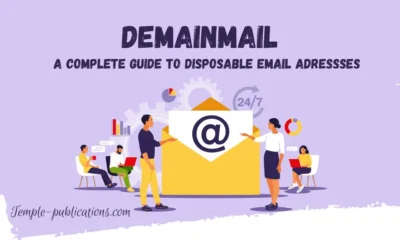INSURANCE
Understanding Your Rights: How to File a Workplace Death Compensation Claim

Losing a loved one is never easy, and when it occurs due to a workplace accident, the grief can be even more overwhelming. During such a tragic time, it’s crucial to understand your rights and the options available for how to claim workplace death compensation. Filing for workplace death compensation can help provide financial support for the surviving family members who may be left in a vulnerable situation. In this article, we’ll walk you through the key aspects of how to claim workplace death compensation, offering insight into the process and your rights.
What is Workplace Death Compensation?
Workplace death compensation is a form of financial support provided to the family or dependents of a worker who has passed away due to a work-related accident or illness. This compensation is typically offered through worker’s compensation insurance or similar workplace death benefit policies that aim to cover the costs of medical bills, funeral expenses, and provide ongoing financial assistance to the surviving family members. The specific amount and type of compensation can vary depending on local laws, the circumstances of the accident, and the insurance coverage provided by the employer. Understanding these details is key to navigating the claims process.Who Can File a Workplace Death Compensation Claim?
The family members or dependents of the deceased worker typically have the right to file a claim. This includes:- Spouse: The husband or wife of the deceased worker.
- Children: Biological or adopted children, often including those who were financially dependent on the deceased.
- Dependents: Individuals who were financially dependent on the deceased worker, such as elderly parents or siblings.
- Estate: In some cases, the estate of the deceased may file the claim.
Why Should You File a Workplace Death Compensation Claim?
Filing a compensation claim ensures that the person and surviving family members receive financial support to help cover various costs during a difficult time. Some of the key reasons to file a claim include:- Funeral Expenses: A workplace death compensation claim can help cover the cost of funeral arrangements, which can often be a significant financial burden.
- Lost Income: The deceased worker may have been the primary breadwinner, and compensation can replace some of the lost income to help family members maintain their living standards.
- Ongoing Support: In cases where dependents rely on the deceased for ongoing financial support, compensation can provide assistance for a period of time, depending on the laws in your jurisdiction.
Steps to Take When Filing a Workplace Death Compensation Claim
Navigating the process of filing a compensation claim can feel daunting, especially when dealing with grief. However, taking the following steps can help ensure that the claim is filed correctly and promptly.1. Notify the Employer or Insurance Provider
The first step in filing a workplace death compensation claim is to notify the employer or the relevant insurance provider about the fatal accident. This should be done as soon as possible after the incident occurs. Employers typically have a legal obligation to report workplace injuries and deaths, but it’s important for the family to ensure this has been done.2. Gather Necessary Documents
To file the claim, you will need to gather various documents related to the accident and the deceased worker. Commonly required documents include:- Death Certificate: A certified copy of the deceased worker’s death certificate.
- Accident Report: Details of the work-related accident, including police reports or workplace injury reports.
- Medical Records: If the death resulted from an illness, such as an occupational disease, medical records supporting this claim will be necessary.
- Proof of Relationship: Documents proving your relationship to the deceased (e.g., marriage certificate, birth certificate for children).
3. Understand the Time Limits for Filing a Claim
There are usually time limits for filing a workplace death compensation claim, which can vary by jurisdiction. It’s essential to file the claim within the specified period to ensure you don’t lose the right to compensation. Be sure to ask about any deadlines that apply in your area.4. Complete the Claim Form
Most employers or insurance providers will have a specific claim form that must be completed to initiate the compensation process. This form typically requires details about the deceased worker, the nature of the work related injury or the accident, and the family members or dependents who are filing the claim.5. Submit the Claim
After completing the required forms and gathering the necessary documentation, you can submit the claim to the relevant authority, whether it’s the employer’s insurance company or a government body responsible for workplace death compensation.What Happens After Filing the Claim?
Once the claim is submitted, it will be reviewed by the relevant authorities. This may include an investigation into the circumstances surrounding the worker’s death, as well as a review of the available evidence. If the claim is approved, the compensation will be provided to the eligible family members or dependents of injured workers. In some cases, a dispute may arise regarding the eligibility for compensation, the amount of compensation, or the determination of fault. If this happens, it may be necessary to consult a legal professional who specializes in workplace injury or death claims.What Compensation Can You Expect?
The amount of compensation awarded will depend on various factors, including the circumstances of the work related death itself, the worker’s salary, and the number of dependents. Compensation is typically designed to cover:- Funeral Costs: These expenses can be significant, and compensation is often provided to cover them.
- Lost Wages: A portion of the deceased worker’s salary may be paid to dependents to help replace the income that has been lost.
- Ongoing Benefits: In some cases, ongoing financial support may be provided, particularly if there are children or dependents who need long-term care.
Legal Assistance: Do You Need It?
While it is possible to file a workplace death compensation claim on your own, seeking legal assistance can be beneficial. A lawyer specializing in workplace accidents and compensation can help guide you through the process, ensure that your claim is complete, and advocate on your behalf if any disputes arise. Legal experts can also assist in cases where the employer is contesting the claim or in situations where a person died and the circumstances of the death are unclear. They can help ensure that you receive the compensation you’re entitled to.Conclusion
Losing a loved one due to a workplace accident or illness is devastating. Filing for workplace death compensation can help ease the financial burden during such a difficult time. By understanding your rights, gathering the necessary documentation, and following the correct process, you can navigate this claim with greater clarity and confidence. If you’re unsure of the steps to take or need assistance, consider seeking professional legal advice to ensure that you get the compensation you’re entitled to. Taking prompt action can help provide the financial and other support you needed during this challenging period. Should you wish to read more, visit our blog page. We’ve got more topics for you!
Continue Reading
-

 BIOGRAPHY6 months ago
BIOGRAPHY6 months agoBehind the Scenes with Sandra Orlow: An Exclusive Interview
-

 HOME1 year ago
HOME1 year agoDiscovering Insights: A Deep Dive into the //vital-mag.net blog
-

 HOME1 year ago
HOME1 year agoSifangds in Action: Real-Life Applications and Success Stories
-

 BIOGRAPHY1 year ago
BIOGRAPHY1 year agoThe Woman Behind the Comedian: Meet Andrew Santino Wife




























